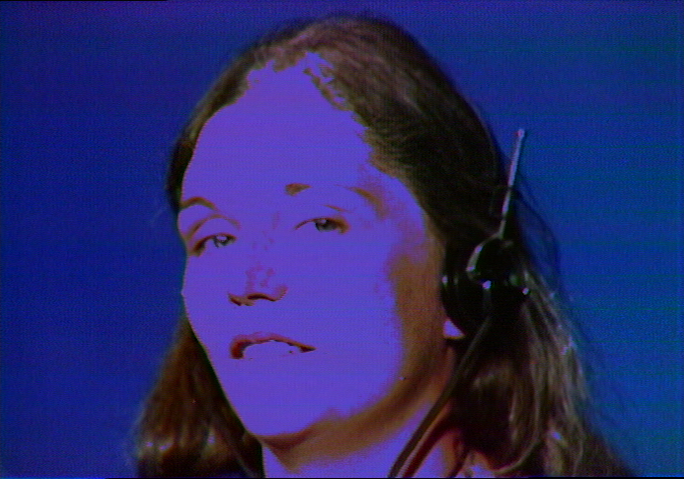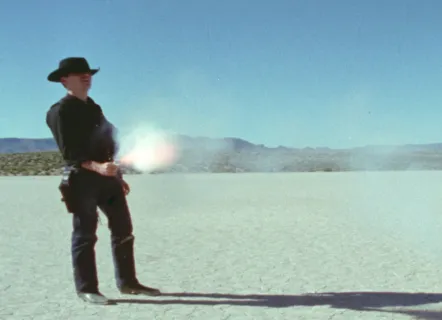
Tickets include access to the Minimal exhibition.
In resonance with the Minimal exhibition, the Bourse de Commerce presents a program of concerts, performances, readings, and screenings. During Friday late openings, films by artists featured in the exhibition — Charlotte Posenenske, Richard Serra, Nancy Holt, Walter De Maria, and Agnes Martin — are shown in the Auditorium starting at 7 PM.
The series continues with a session devoted to the films of American artist Richard Serra (1938–2024). Most of his early films, beginning in 1968, feature brief actions: a hand trying to catch falling pieces of lead, two bound hands freeing themselves from a rope, Tina spinning. Later, his work took on a more political dimension, exploring information theory, media, and perception.
Program
- Hand Catching Lead, 1968.
Richard Serra. 16 mm film, black and white, silent, 3 min 15. Camera: Robert Fiore.
In Hand Catching Lead, Serra’s first film, his right hand appears on screen, trying to catch falling pieces of lead, opening and closing with each attempt. As the film progresses, the effort becomes more visible and the hand grows tired.
- Hand Lead Fulcrum, 1968.
Richard Serra. Film 16 mm noir et blanc, muet, 2 min 38. Caméra : Robert Fiore.
Like Serra’s other hand-centered films, Hand Lead Fulcrum shows a task performed in real time within the frame’s limited space. He holds a strip of lead at arm’s length at the top of the image; the film ends when the effort forces him to lower his arm out of view.
- Hands Scraping, 1968.
Richard Serra and Philip Glass. 16 mm film, black and white, silent, 4 min 02. Camera: Robert Fiore.
This film presents a choreography of hands — those of Richard Serra and composer Philip Glass, physically distinct yet naturally interacting — as they methodically clear a floor of lead shavings, creating a rhythm that transcends the mere act of cleaning.
- Hands Tied, 1968.
Richard Serra. 16 mm film, black and white, silent, 5 min 55. Camera: Robert Fiore.
Rather than a simple task, Hands Tied is a performance that lasts as long as it takes Richard Serra, with his hands bound by a rope, to undo the knots.
- Frame, 1969.
Richard Serra. 16 mm film, black and white, silent, 21 min. Camera: Robert Fiore.
In Frame, Richard Serra takes a series of measurements with a small six-inch ruler, demonstrating the disparity between what is seen through a camera lens and direct visual perception of the same space. In a New York loft, a seemingly rectangular window is revealed to be a trapezoid.
- Tina Turning, 1969.
Richard Serra. 16 mm film, black and white, silent, 2 min 34. Camera: Robert Fiore.
In Tina Turning, artist Tina Girouard spins around until she loses her balance and falls out of frame.
- Anxious Automation, 1971.
Richard Serra and Joan Jonas. Black-and-white video, sound, 4 min 20. Soundtrack: Philip Glass.
In this video, Joan Jonas performs a series of brief actions. The work combines footage from two cameras zooming in and out at different speeds, while composer Philip Glass taps a microphone out of sync, creating a disjunction between time and space, between sound and image.
- Color Aid, 1971.
Richard Serra. 16 mm color film, sound, 33 min 44. Camera: Robert Fiore.
Named after the Color-aid Corporation’s colored paper samples, Color Aid — Richard Serra’s only 16 mm color film — explores visual perception. The artist’s fingers successively remove colored sheets from a stack of paper, briefly interrupting the shot each time.
- Paul Revere, 1971.
Richard Serra. 16 mm film, black and white, sound, 7 min 25.
Created in collaboration with video artist Joan Jonas, this work references Paul Revere (1735–1818), the American patriot who devised a secret light signal to warn of British troop movements during the American Revolution. Using elements of that signal, the film reveals the inherent limits of different communication systems.
- Surprise Attack, 1973.
Richard Serra. Black-and-white video, sound, 1 min 53. Camera: Babette Mangolte.
The camera focuses on Richard Serra’s forearms as he tosses a piece of lead from one hand to the other while reciting an excerpt from Thomas Schelling on game theory and the potential for violence.
- Television Delivers People, 1973.
Richard Serra and Carlota Schoolman. Color video, sound, 6 min 28.
Broadcast on television in 1973 — after the artists purchased airtime — Television Delivers People features scrolling yellow text on a blue background accompanied by kitschy elevator music. It is among the first works to explore the relationship between mass media and its audience. Viewers are confronted with critical statements inviting them to reflect on their own behavior toward television.
- Boomerang, 1974.
Nancy Holt and Richard Serra. Color video, sound, 10 min 47.
Filmed in a television studio in Amarillo, Texas, Boomerang shows artist Nancy Holt describing her immediate experience of being filmed, as her own words are fed back to her through headphones with a few seconds’ delay. The work explores the relationship between thought generation and reaction, as her words “return” like a boomerang, reintegrating into her process of reflection and speech.


